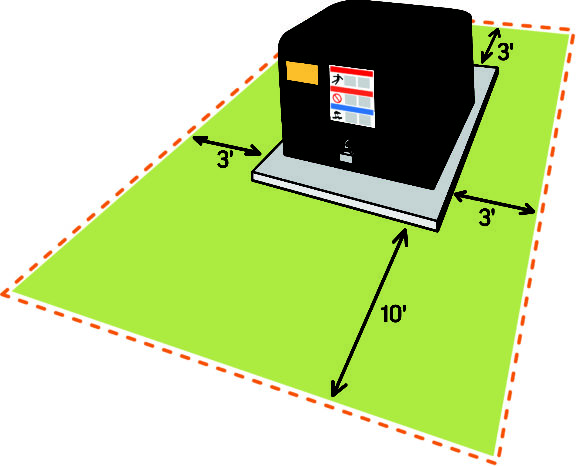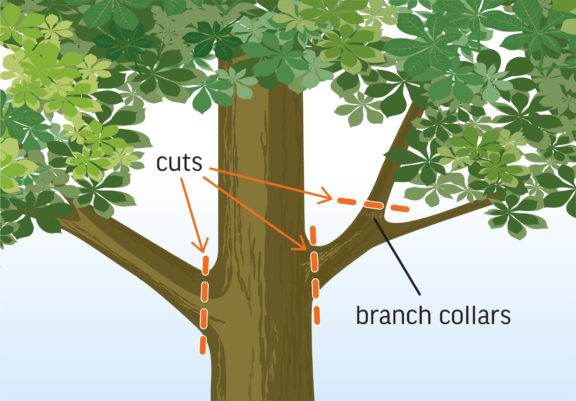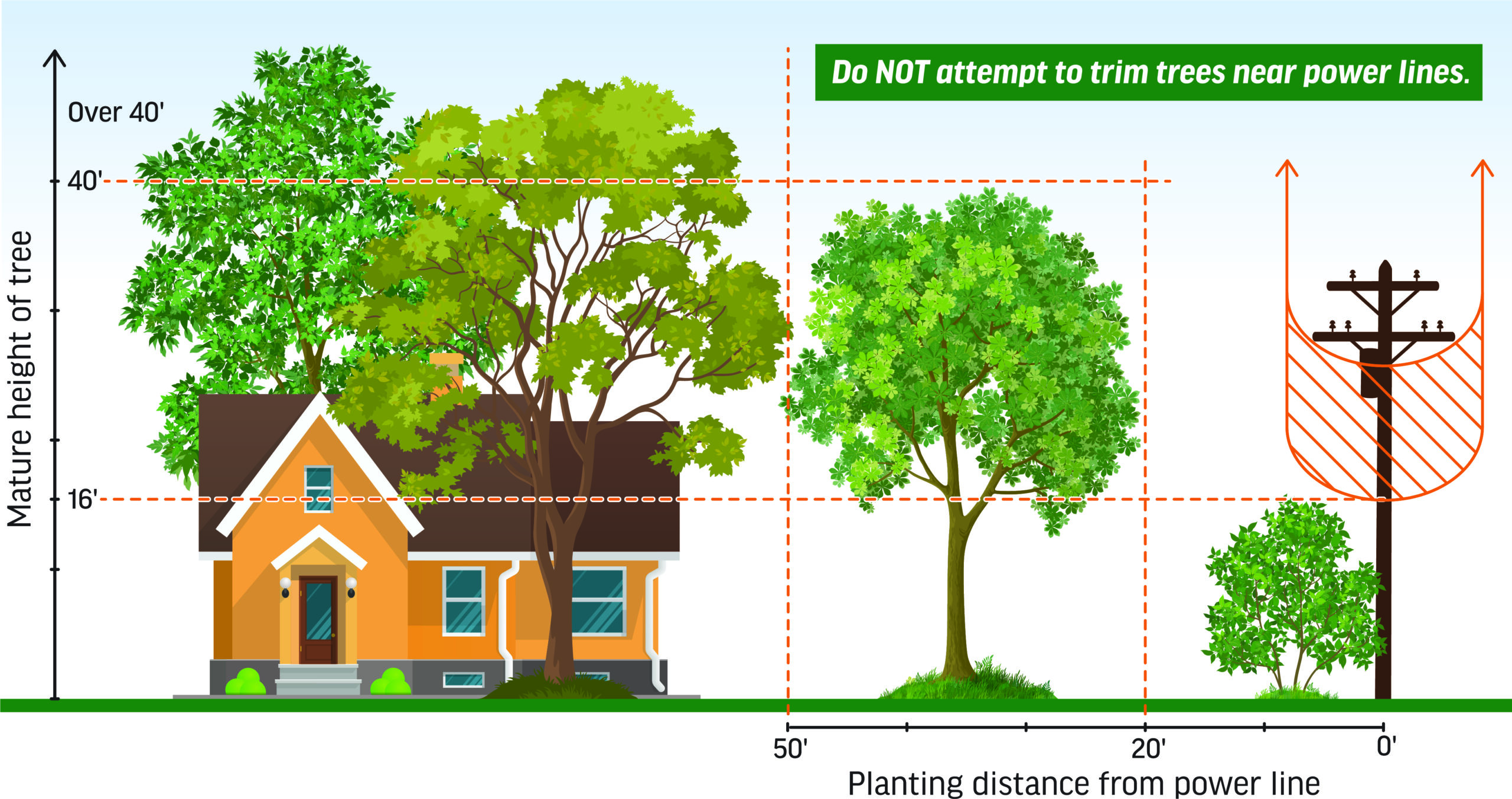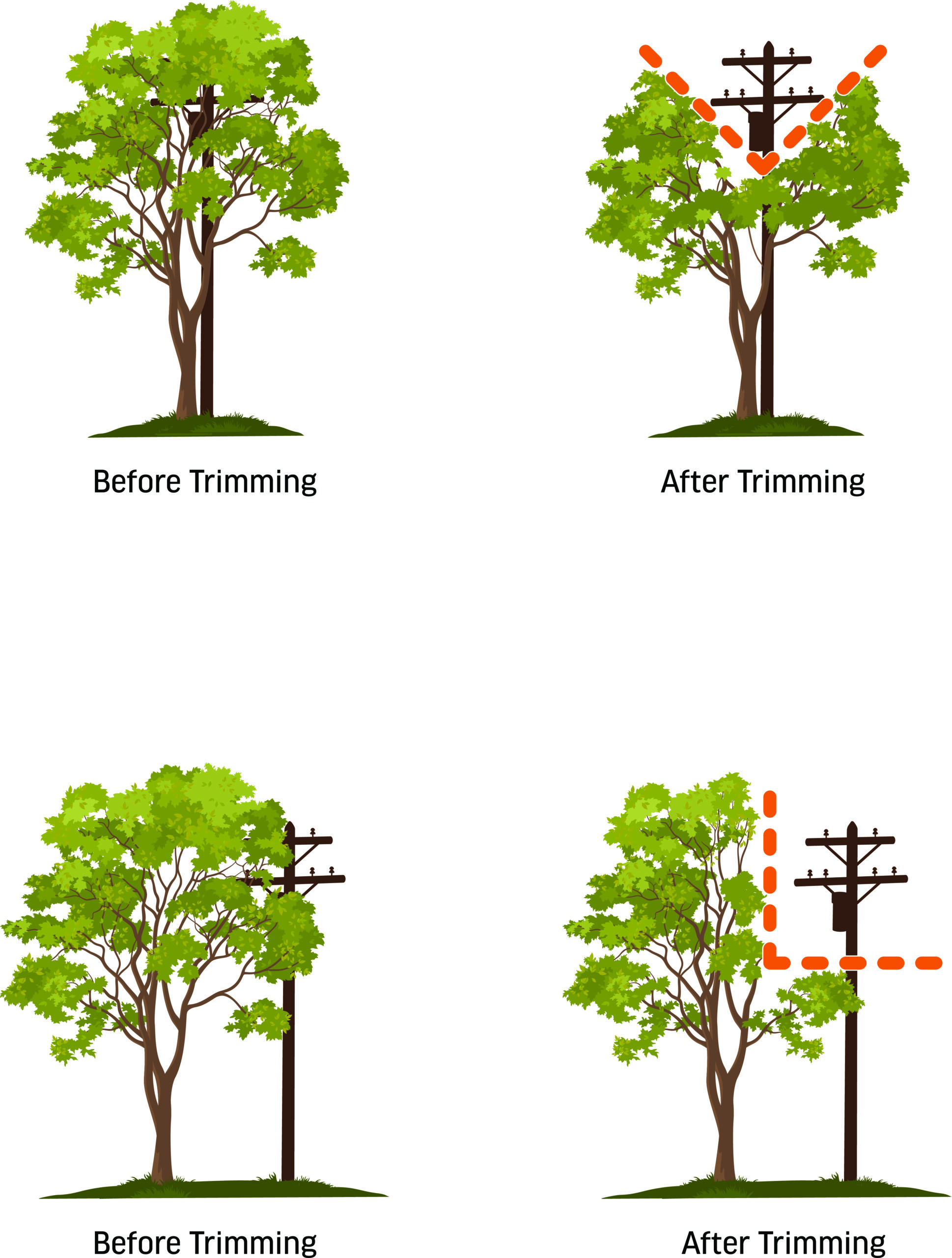Tree Trimming
Tree Trimming Practices: Preventing Power Outages
While trees are an important part of the environment and are integral to any landscape, they can often pose as a challenge when keeping the lights on and maintaining a reliable system. It’s a dangerous threat when trees make contact with live wires or its roots penetrate a water line.
The annual cost of labor and materials for tree pruning and removal is significant and ultimately is a cost shared by all NBU customers. The vast majority of trees that NBU maintains are trimmed to ensure there is adequate clearance to uninterrupted service. Tree trimming work is necessary to protect the public and NBU employees who service the lines, as well as to ensure safe, reliable electrical service.
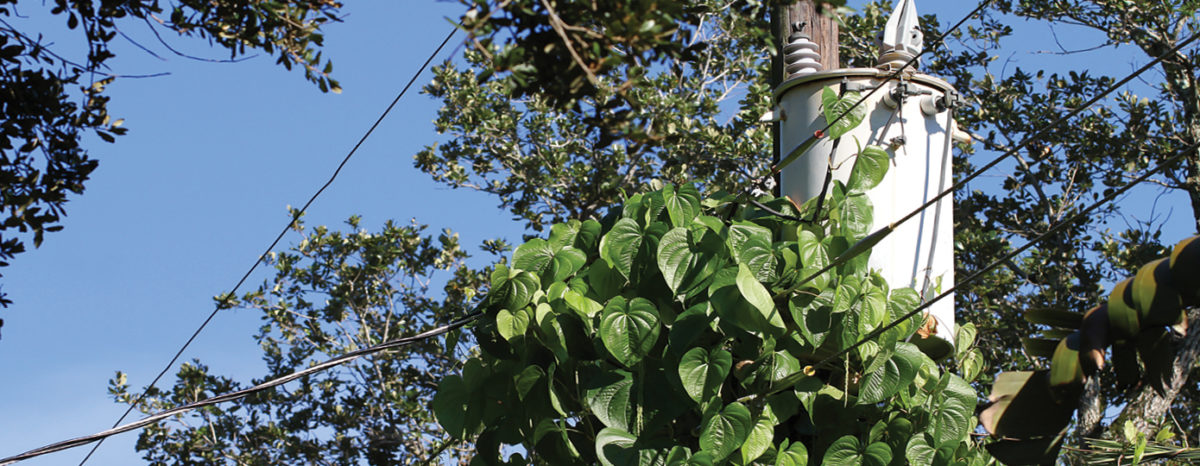
The best way to avoid conflicts is to never plant trees underneath power lines. Trees or vegetation that interferes with maintenance, construction, or reliability of electric lines are subject to trimming or removal.
Trees affecting power lines may be removed when a hazard cannot be eliminated. NBU takes into account our community’s imminent safety, concern, and any other vulnerabilities. If you choose to plant trees near your home, plant the right tree in the right place. Select trees that have a short height at maturity and a crown spread that will not interfere with nearby power lines. Proper selection and placement of trees can eliminate potential safety hazards, reduce expenses, improve service reliability, and enhance landscape appearance.
Unfortunately, people often find this necessary pruning to be aesthetically unacceptable. Due to the inherent danger of electric lines, pruning within easement areas should only be carried out by professionals trained in line clearance pruning; never by homeowners. New Braunfels Utilities tree trimming professionals follow best management practices for utility pruning of trees. These practices were developed from the residential and commercial tree care industry, utilities, the municipal and federal sectors, the landscape and nursery industries, and other interested organizations, and are documented in the American National Standards Institute publication ANSI A300, part 1. New Braunfels Utilities trims-eight feet from the overhead primary system. New Braunfels Utilities tree trimming standards include natural lateral or directional trimming methods that promote the growth of the tree away from the electrical facilities. These trimming methods ideally allow a tree to retain as much of its natural form as possible while requiring less trimming in the future.
Trees will continue to grow, however, they will not look the same as before they were trimmed. Because trees and power lines are not compatible, NBU will continue to trim as necessary in the future to maintain clearance for service reliability. Allowing the trees to grow naturally could create problems with the delivery of electrical service. New Braunfels Utilities does use natural trimming methods to minimize aesthetic impact.
Trimming is done to cause the least possible stress to the tree. Proper trimming methods are used to minimize the impact on a tree’s health, structure, and appearance. For example, when limbs are removed, they are cut at the branch collar, which reduces the likelihood of disease or decay entering the tree, and excessive re-sprouting.
Yes, if you feel your trees are too close to any electrical infrastructure, we encourage you to submit a form here to request tree trimming. A representative from NBU will inspect the tree to determine if it requires trimming immediately.
New Braunfels Utilities may cut down trees that are close to power lines based on certain factors, such as the types of equipment affected, the type of tree, its growth rate, its appearance after normal line clearance maintenance, size, health, ongoing line clearance requirements, etc. The Utility Forester or Supervisor will determine whether or not a tree should be removed. If removal is necessary or desired for the health of NBU’s electric system, it will be at no charge to the customer. If a tree is removed by NBU, there will be a 4-6 foot stump left to be removed by the customer, unless prior arrangements have been made. If the removed tree is a palm tree, the customer is responsible for disposal, unless prior arrangements have been made.
Under normal daily operations, tree trimming debris should be removed from your property on the same day the work is performed. Occasionally, it may be left overnight and removed the next morning; only after the contractor has properly notified the property owner and/or received his/her consent. Property owners are responsible for clearing debris resulting from emergency tree trimming. Service restoration caused by fallen/broken trees, after inclement weather, or in the immediate aftermath of a major storm or other natural disaster is your responsibility.
New Braunfels Utilities does not charge for typical tree trimming services performed on its existing electrical facilities; we provide this service to help ensure reliable electric service. If an NBU contractor requests payment for this service, you should notify NBU immediately. (Note: NBU may charge individuals or developers for tree clearing to help facilitate new service construction in certain situations, which would be agreed upon prior to construction.)
No. NBU does not trim or remove trees away from telephone, DSL, or cable television wires.
Consider the height and spread of mature trees and plants and allow for at least 10 feet of access in front of the transformer and three feet around the sides and back.
Vines on poles and guy wires will be cut at or close to ground level and left to deteriorate. Vines that are cut may be treated with herbicides to prevent re-growth.
No! Serious injury or death can occur when untrained homeowners or workers attempt to trim trees around energized power lines. Unless you coordinate with NBU to do the work safely, only professionals who are authorized by NBU are legally allowed to trim or remove trees next to energized power lines. These professionals have been properly trained and equipped to work safely around power lines.
-
Before You Dig
View Page: Before You Dig -
American National Standards Institute
View Page: American National Standards Institute
-
Utilities
View Page: Utilities -
Right of Entry
View Page: Right of Entry -
Homeowner Maintenance
View Page: Homeowner Maintenance
